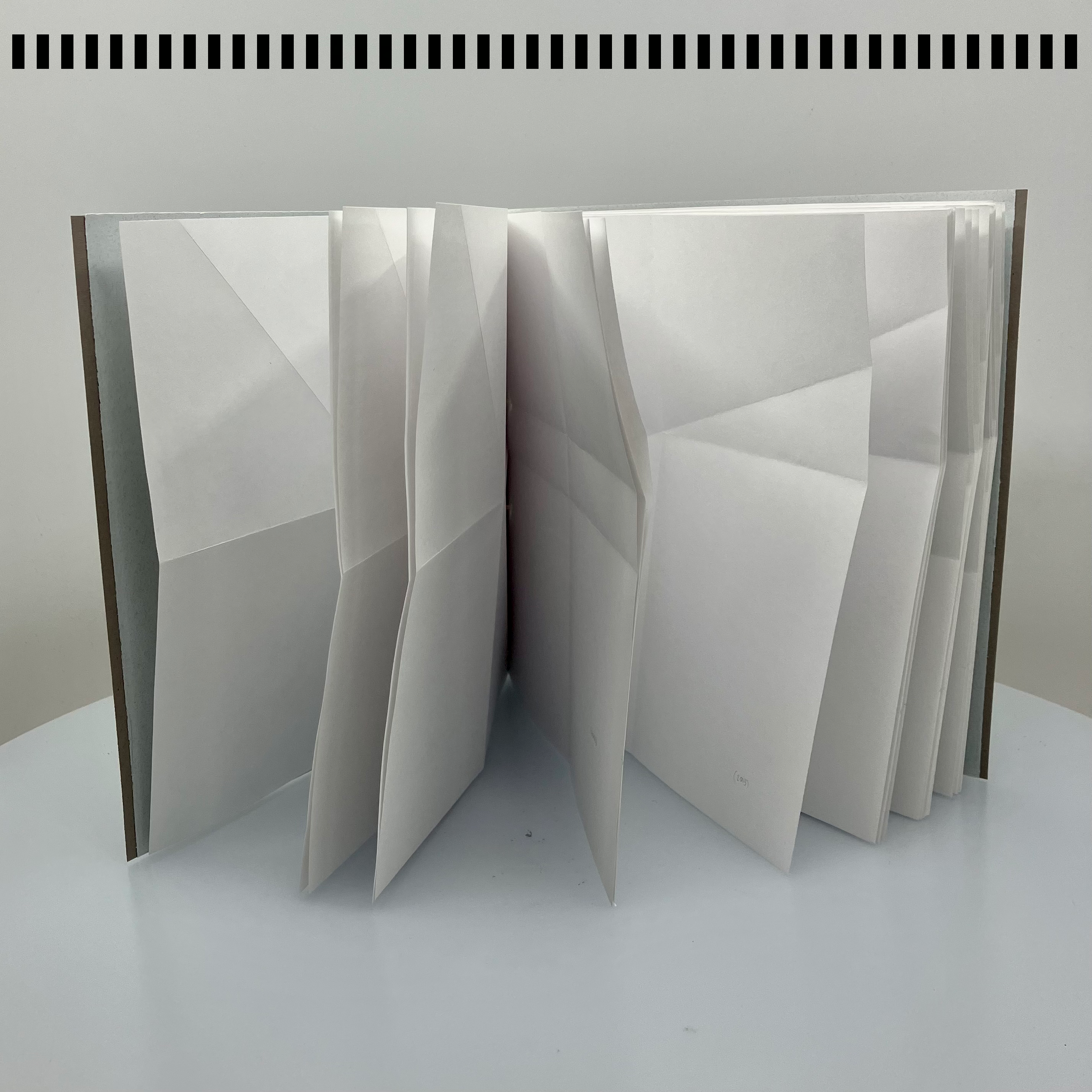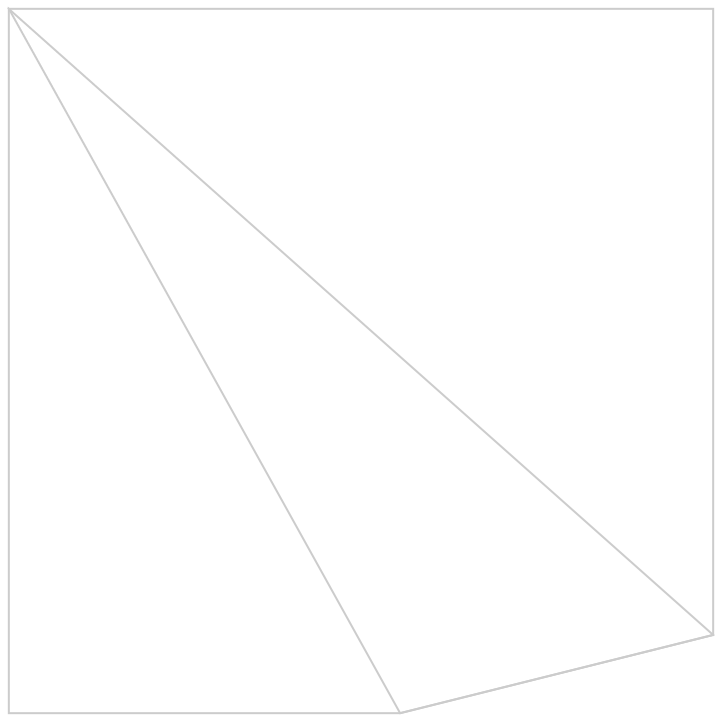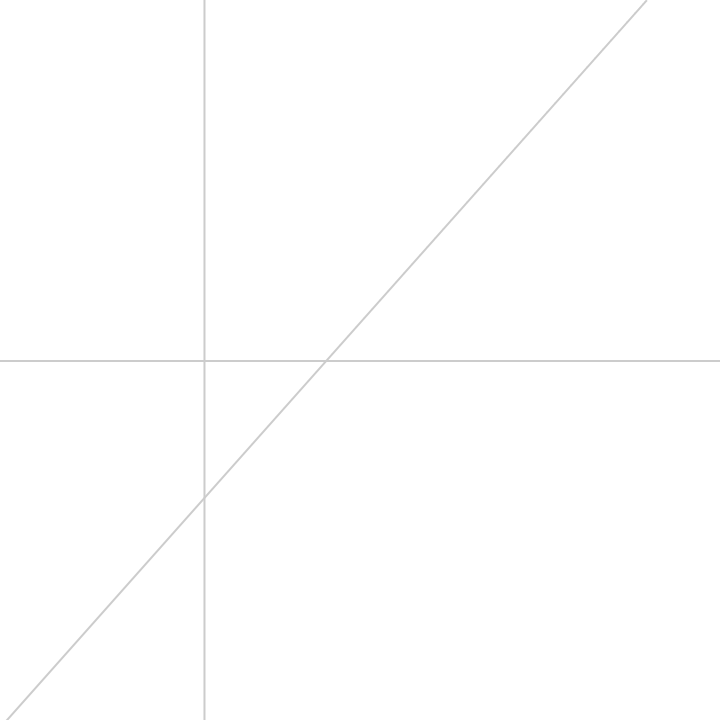


|

|
book of folded paper

|

|
Years are edges in time that exist and also don't really exist. Defined as they are by rotations of the Earth around the sun, there is a physical reality corresponding to our definition of a year. On the other hand, the idea of a “new year” is a construction; the start of each calendar year is an arbitrarily chosen point within the continuous passage of time. As Leah Beeferman writes, “a beach has a dual nature, as it is both a vista and a boundary: a blurry, but extant, shift between land and sea; the hazy edge of both.” Transitions between years are “hazy edges,” a shift from past to future that is both gradual and instantaneous, or, as Richard Feynman might say, a line that doesn’t exist except in “our own psychological makeup.”
I chose to use folds as representations of "hazy edges," since they define clear, straight lines using the dimensionality of the paper instead of a line drawn in ink: edges created by emphasizing a transition between planes of a surface.
The folds in each page in the book notate numerical information stored in the edges of each piece of paper. The result is a numerical representation system for 4-digit numbers, whose digits are stored using the folds between them. Each 4-digit number in this book corresponds to a year of my life so far. To read the year, you must fold the paper along the creases in the paper and measure where the edges connect. I also implemented this system in Wolfram Language code, as demonstrated by the GIFs above.
I found it a meditative process to fold each year of my life into a piece of paper. In the end, binding the pages into a book makes it more difficult to retrace the creases, like time solidifying so that we can’t revisit it once it has passed.